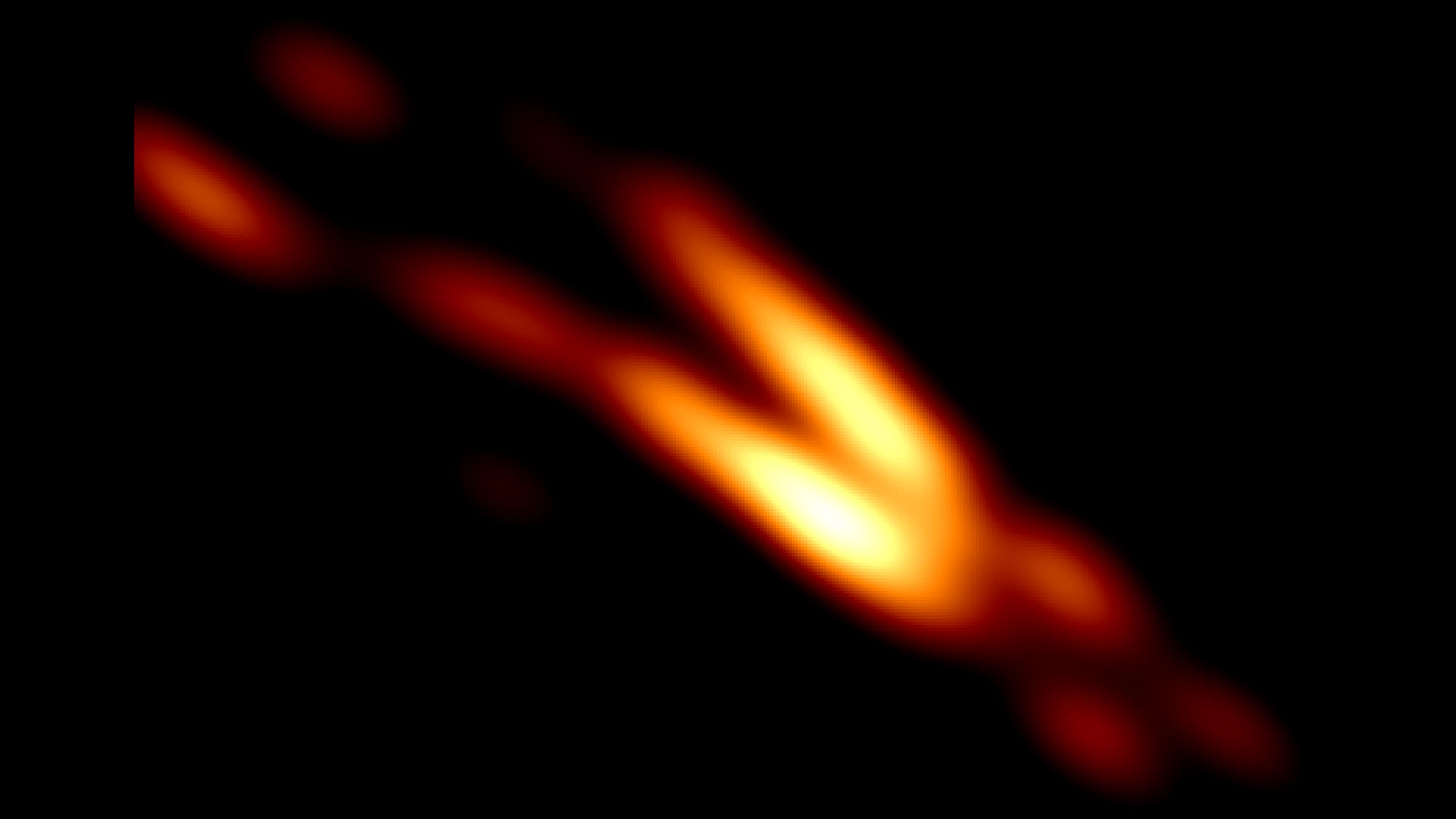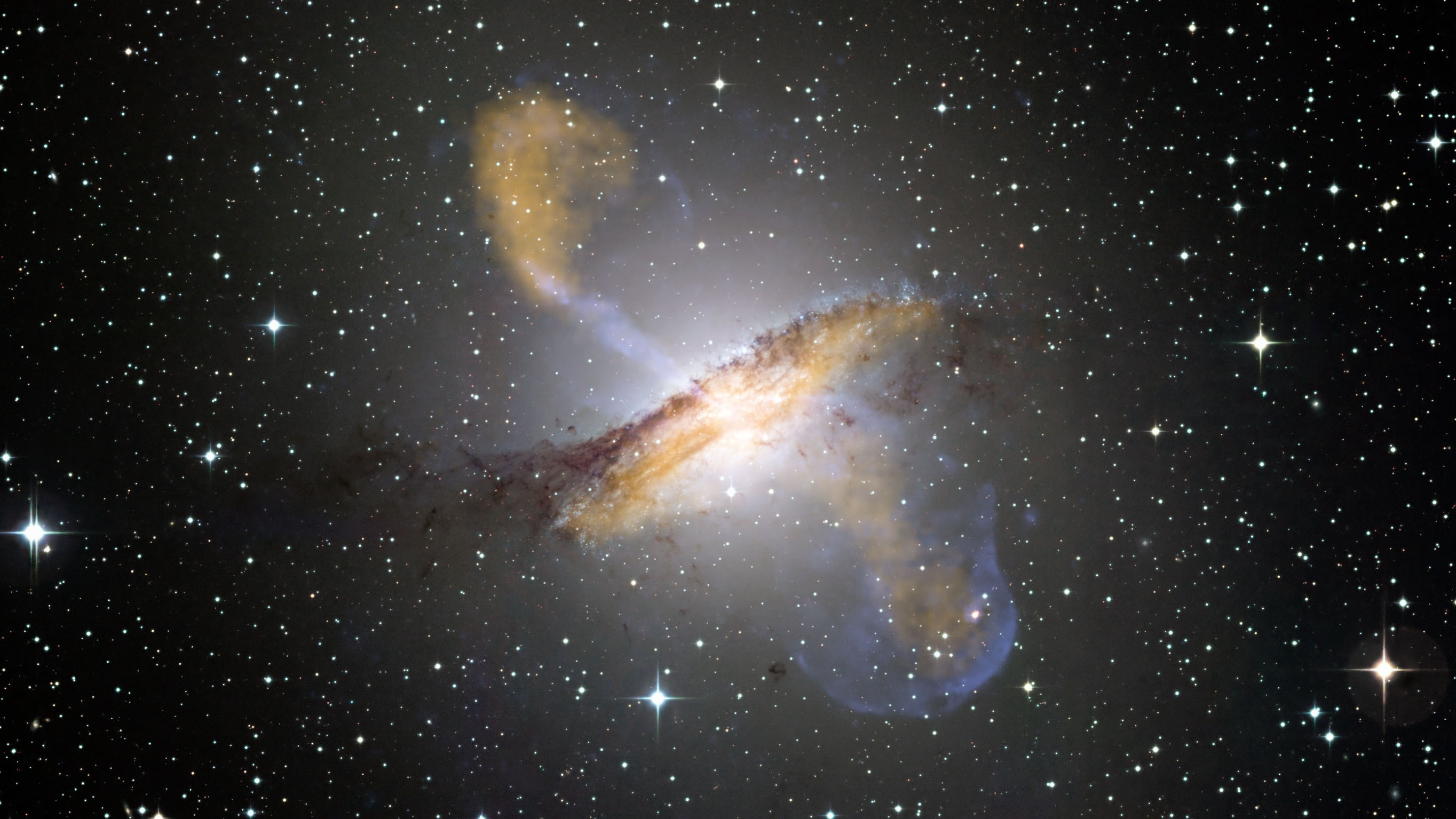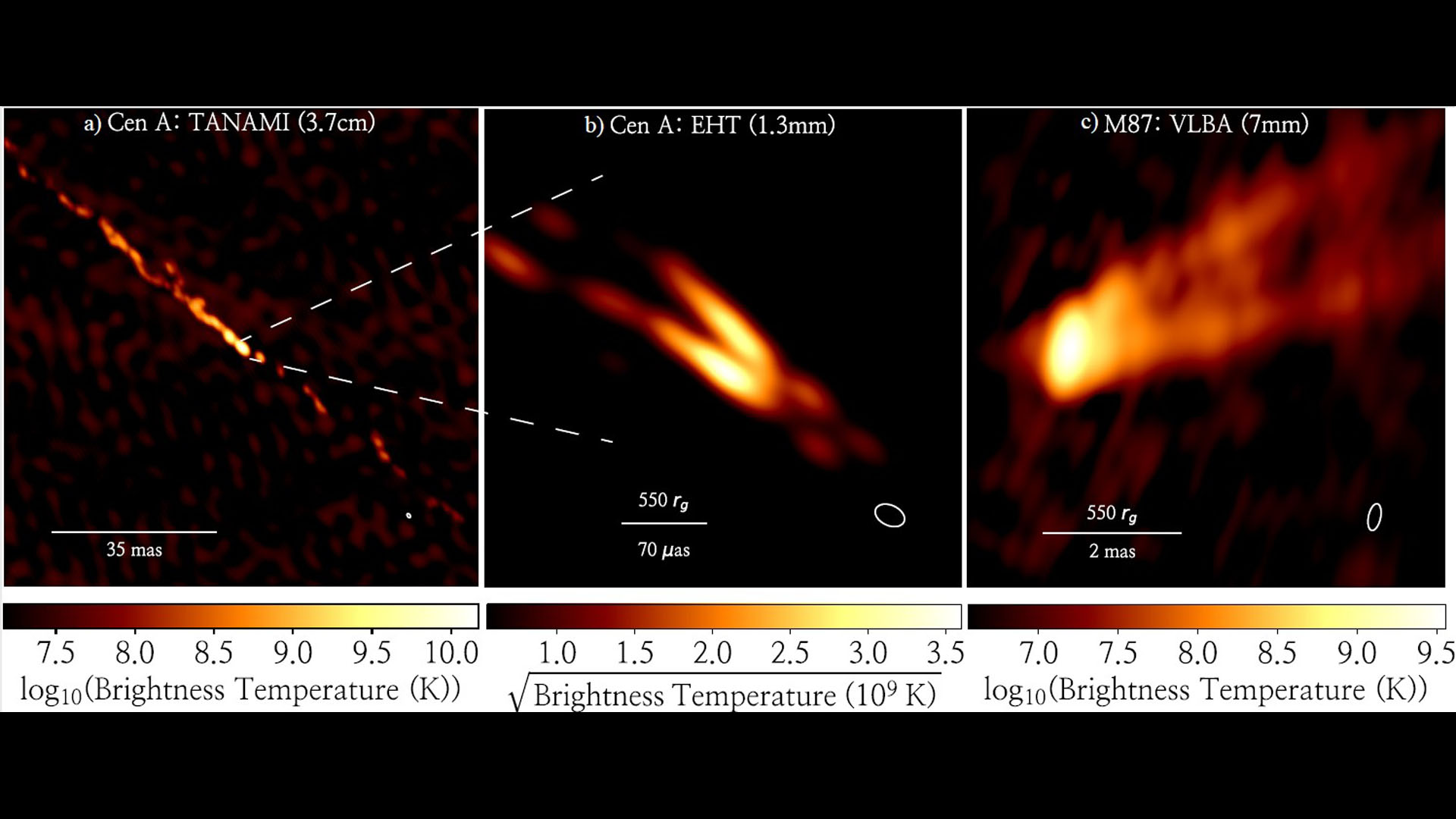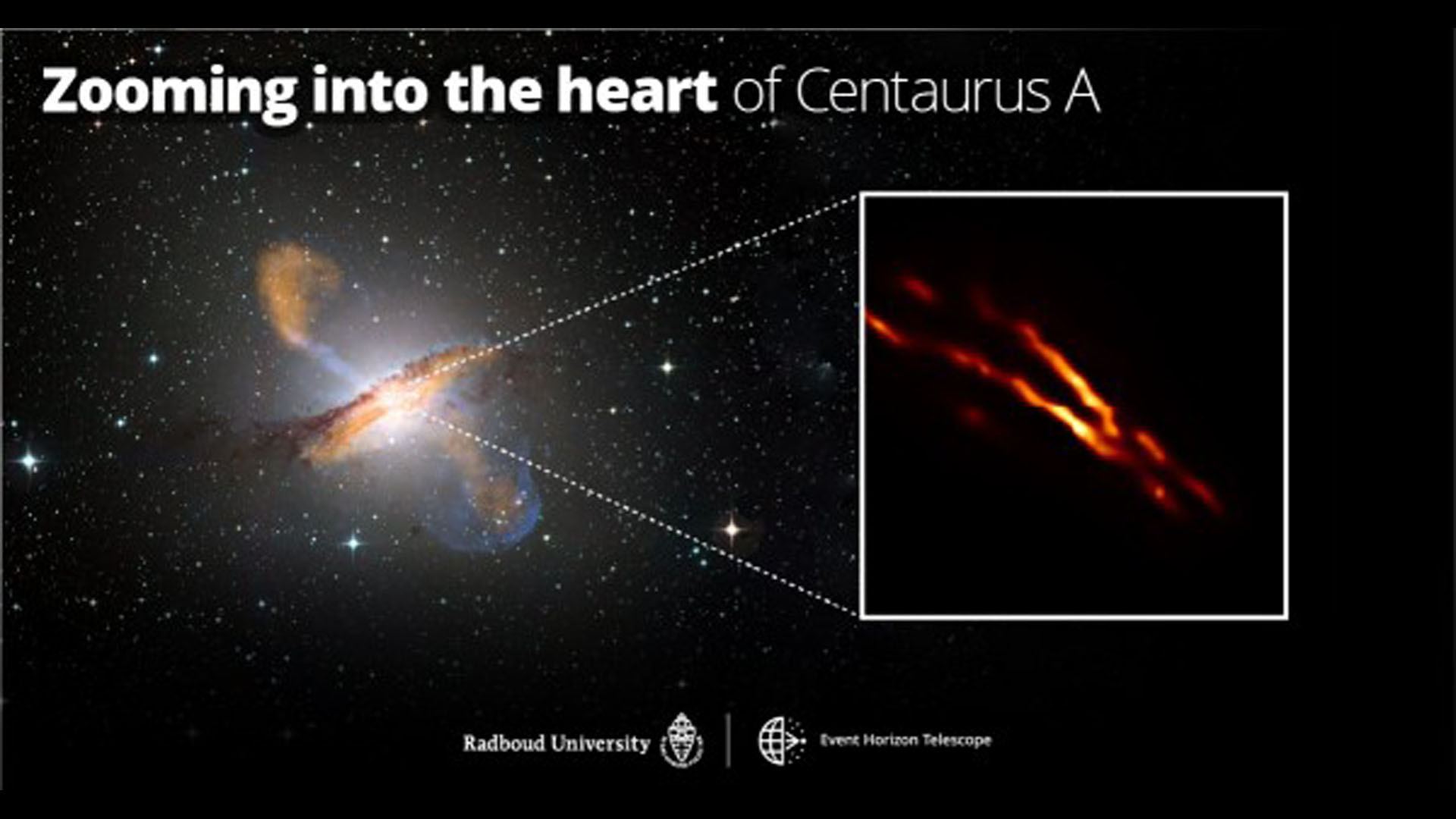A powerful jet emerges from a black hole in unprecedented detail in new images
The new images show a black hole jet at 16 times sharper resolution than previously possible.

New images obtained by the Event Horizon Telescope (EHT) reveal a powerful jet ejected from a supermassive black hole in unprecedented detail.
The images reveal the jet emitted by the black hole at the center of the Centaurus A galaxy with a ten times higher accuracy and with sixteen times sharper resolution than was possible before.
"This allows us for the first time to see and study an extragalactic radio jet on scales smaller than the distance light travels in one day," astronomer Michael Janssen of the Max Planck Institute for Radio Astronomy in Germany and Radboud University in the Netherlands, said in a statement. "We see up close and personal how a monstrously gigantic jet launched by a supermassive black hole is being born."
Related: First image of a black hole gets a polarizing update that sheds light on magnetic fields
The EHT data reveal massive lobes of radio emissions emanating from a black hole that appears rather tiny when observed from Earth. The scientists said in the statement that when magnified by a factor of 1 billion, the black hole would appear as large as an apple on the surface of the moon observed from Earth, while the radio lobes, or jets, would be 16 times as wide as the moon itself. However, the black hole at the center of Centaurus A has the mass of 55 million suns.
The Centaurus A galaxy, also known as NGC 5128 or Caldwell 77, is one of the brightest and largest objects in the night sky when observed at radio wavelengths. In 1949, the galaxy, located in the constellation Centaurus, was identified as the first known source of radio waves outside of our galaxy, the Milky Way.
"It's amazing that we can study Centaurus A now with the extreme resolution of the EHT," Maciek Wielgus, a co-author of the study and researcher at the Center for Astrophysics at Harvard & Smithsonian, said in the statement. "We have never seen this nucleus before, as we didn't have sufficiently high resolution and we weren't looking at high enough frequencies."
Get the Space.com Newsletter
Breaking space news, the latest updates on rocket launches, skywatching events and more!
He added that the black hole at the center of Centaurus A appears very different from the one at the center of the Milky Way, which EHT is also studying, and emits much more energy.

The new images come from measurements obtained during the 2017 imaging campaign, which produced the first ever images of a black hole, the one at the center of the Messier 87 galaxy.
The observations were made possible by the EHT collaboration, which brings together 8 radio observatories all around the globe that work together as one Earth-size telescope. The partnership creates incredibly powerful observations because the resolution of a radio image is limited by the size of the telescope that receives the signal.
Scientists are still unraveling what powers the creation of the mysterious black hole jets, the sprays of material that somehow manage to escape the powerful pull of the black holes and instead of being trapped inside of their blackness end up traveling millions of light-years across distances greater than the size of the galaxies in which they originated.


The new images also reveal that the areas of the jet farther from the center are brighter than the parts closer to the black hole, a so-far unexplained phenomenon that has been observed previously.
"Theoretically, jets can collide with galactic gas and heat up the edge, but the details of such a process so close to the black hole are a complete mystery," Koushik Chatterjee, a study co-author and researcher at the Center for Astrophysics at Harvard & Smithsonian said in the statement. "The brightness contrast between the center and the edge could potentially provide us with new insights about the plasma physics both within and around jets, making Centaurus A an exciting target for next-generation black hole simulations."
In the future, the researchers plan to use space-based telescopes to image the environment surrounding the black hole at the center of Centaurus A at even shorter wavelengths and with even higher resolution, according to the statement. The ultimate goal is to obtain images of the central black hole itself rather than its immediate surroundings — equivalent for what the team did for the black hole at the center of M87.
The research is described in a study published in Nature Astronomy on Monday (July 19).
Follow Tereza Pultarova on Twitter @TerezaPultarova. Follow us on Twitter @Spacedotcom and on Facebook.
Join our Space Forums to keep talking space on the latest missions, night sky and more! And if you have a news tip, correction or comment, let us know at: community@space.com.

Tereza is a London-based science and technology journalist, aspiring fiction writer and amateur gymnast. Originally from Prague, the Czech Republic, she spent the first seven years of her career working as a reporter, script-writer and presenter for various TV programmes of the Czech Public Service Television. She later took a career break to pursue further education and added a Master's in Science from the International Space University, France, to her Bachelor's in Journalism and Master's in Cultural Anthropology from Prague's Charles University. She worked as a reporter at the Engineering and Technology magazine, freelanced for a range of publications including Live Science, Space.com, Professional Engineering, Via Satellite and Space News and served as a maternity cover science editor at the European Space Agency.









